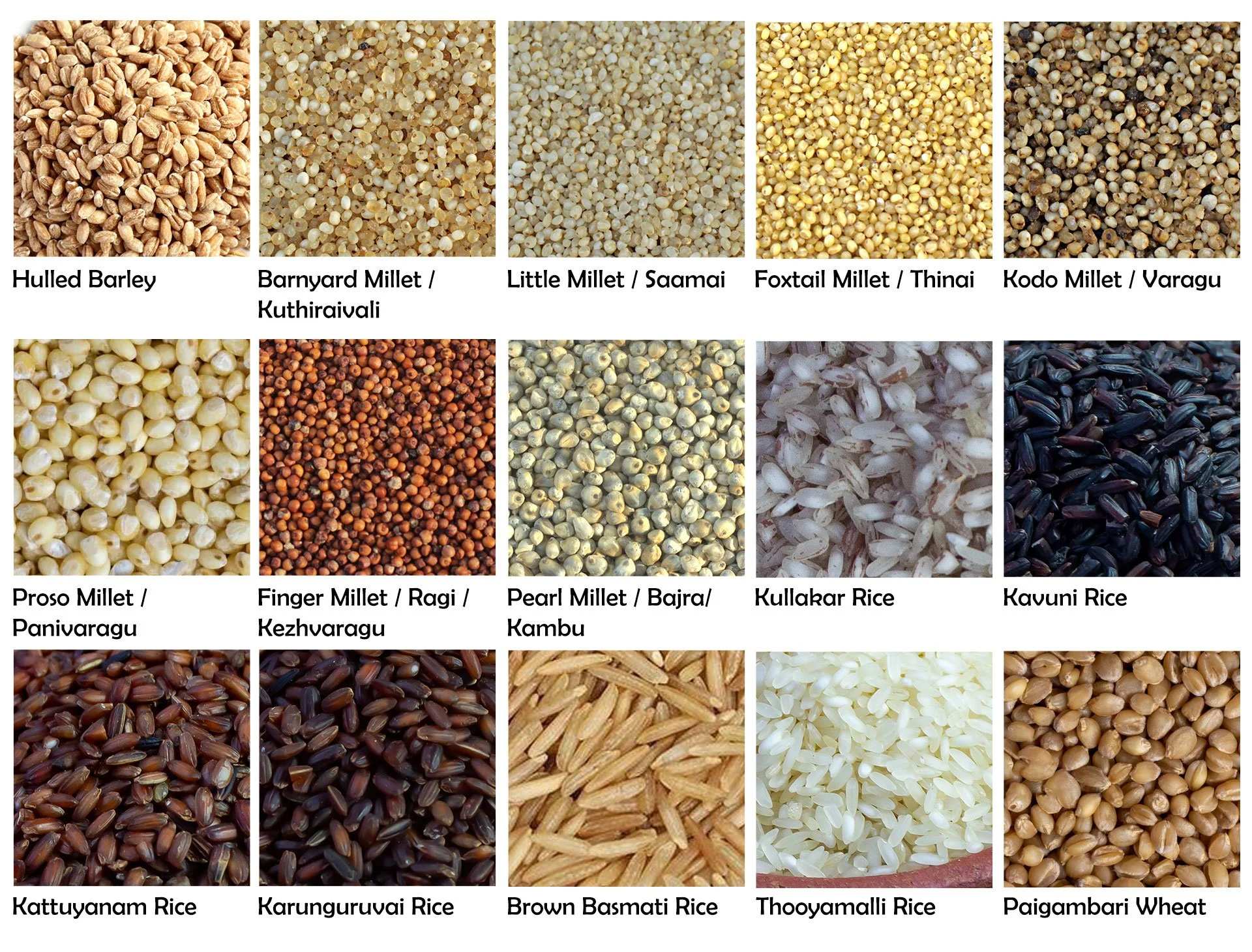Understanding Glycemic Index
Note: this article is intended to provide a broad understanding of the topic, and not to give medical advice. Do seek the counsel of your health-care provider if you have diabetes or other conditions.
Having a diet wherein carbohydrates are slowly converted and released as sugars into our blood is crucial for metabolic health.
Glycemic Index (GI) is an indicator of the rate of release of sugar into the blood, after consuming a food. The carbohydrates in low GI foods are digested and absorbed more slowly.
A typical South Indian diet, consisting of large portions of polished white rice, dosa, bread, maida-based parotta etc, leads to quick blood sugar spikes and drops. This in turn, can cause insulin resistance and associated metabolic health conditions.
Low GI foods are best suited for preventing and managing pre-diabetes, Type-2 diabetes, and weight management.
GI is a number between 0-100 and foods are classified as
low (0 – 55)
medium (56-69)
or high (70-100) GI.
Foods that are low or medium GI are usually high in complex carbohydrates and fiber, thus slowing the breakdown of carbohydrates into sugar.
Anatomy of a grain
Rice and other grains have three layers: the husk (or outer covering), the bran (middle layer containing minerals and vitamins), and the endosperm (innermost starchy portion). The colour of the bran layer determines whether rice is classified as black, red, brown or white.
It has become the norm, over the last many decades, for rice to be milled and polished to remove both the husk and bran layers. Unfortunately polishing removes the most important nutrition and fiber from the rice, leaving only the starchy portion!
The process of parboiling (where the grain along with the husk is passed through steam before milling) retains a majority of the nutrients, making the rice firmer and more digestible.
Milling processes that mimic hand-pounding, remove only the husk with minimal (or no) polishing. This retains nutrients as well as fiber.
Whole grains that are unpolished typically have low to medium GI.
Selecting and cooking low GI grains
We have a large number of unpolished or less polished grains at reStore – millets, traditional rices, heirloom wheat and hulled barley. Of these some are especially beneficial to prevent and manage metabolic conditions, being low GI grains.
Along with selecting suitable grains, limiting portions is also important in order to reduce the glycemic load (carbohydrate impact on blood sugar) of the food.
Factors that help to lower the GI of grains, especially rices and millets:
Aging rices (stored unprocessed) before milling, to a minimum of one year.
Less or no polishing (i.e. how much of the bran layer remains)
Parboiling (which changes the starch structure and retains more nutrients)
Soaking the grain for at least 30 mins before cooking (note that red rices need much longer soaking).
Open pot cooking and draining excess water & starch.
Cooking the grain with a small quantity of oil.
Cooling and reheating. Cooling any cooked grain overnight and then reheating it increases “resistant starch” content which does not get absorbed in the small intestine, thus lowering the GI of the food. Similarly, refrigerating and then toasting bread helps lower its GI.
Combining the grains with good protein and vegetables.
Factors that increase the GI of grains:
Polishing the bran layer. When the extent of polishing is higher, more of the complex carbohydrates, minerals and vitamins are lost.
Grinding them into flour increases the GI by about 10 points. Coarse grinding into rava form is better than fine-ground flours. Further processing such as extruding into noodles also increases the GI.
Making flakes (poha or aval) increases the GI closer to the flour form. However these are better than flakes of polished grains.
Overcooking the grains. It is best to cook the grain until soft but chewy.
The table below gives the low and medium GI grains that we carry at reStore, along with their nutritive properties.
Sample meal plan for metabolic conditions
Given the above low GI grains, a daily meal-plan suitable for metabolic conditions, especially for the South Indian diet, would include:
At the main meal of the day (lunch) a portion of:
Aged rice from the above list – parboiled and hand-pounded
OR
Barnyard (kuthiraivali) millet rice.
One or two other meals (breakfast / early dinner) to include:
Hulled barley made as kichdi (from rava) OR rotis (from flour).
OR
Millet (kuthiraivali / varagu/ thinai ) in the form of kichdi / variety rice / upma/ dosa
OR
Kullakar or Kavuni rice dosa
OR
Paigambari wheat roti
OR
Kambu / Ragi adai or roti.
As mentioned earlier moderation in portion size is important to reduce carbohydrate load on the system. These grains must be complemented with suitable sources of protein, vegetables etc. for a balanced diet.



